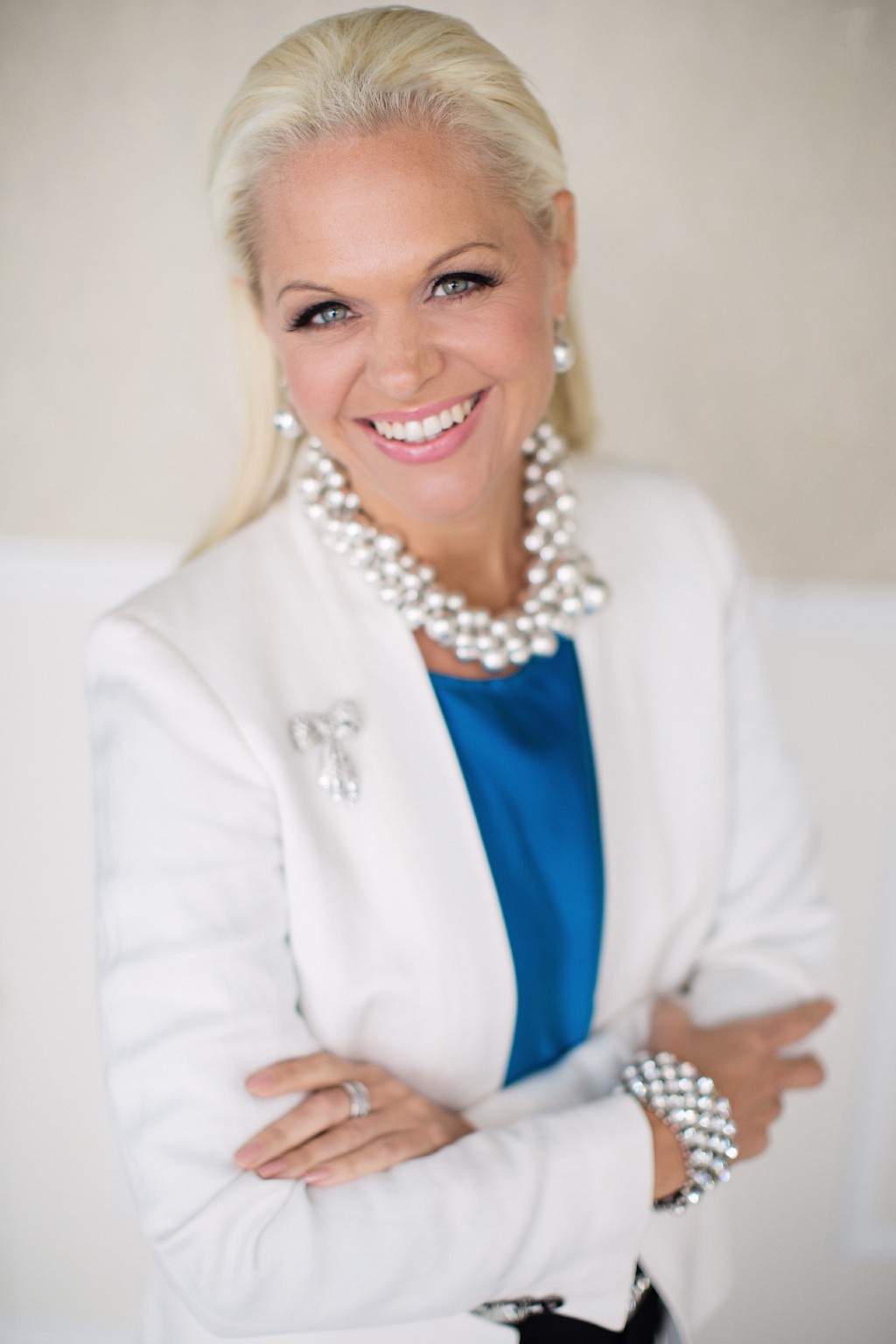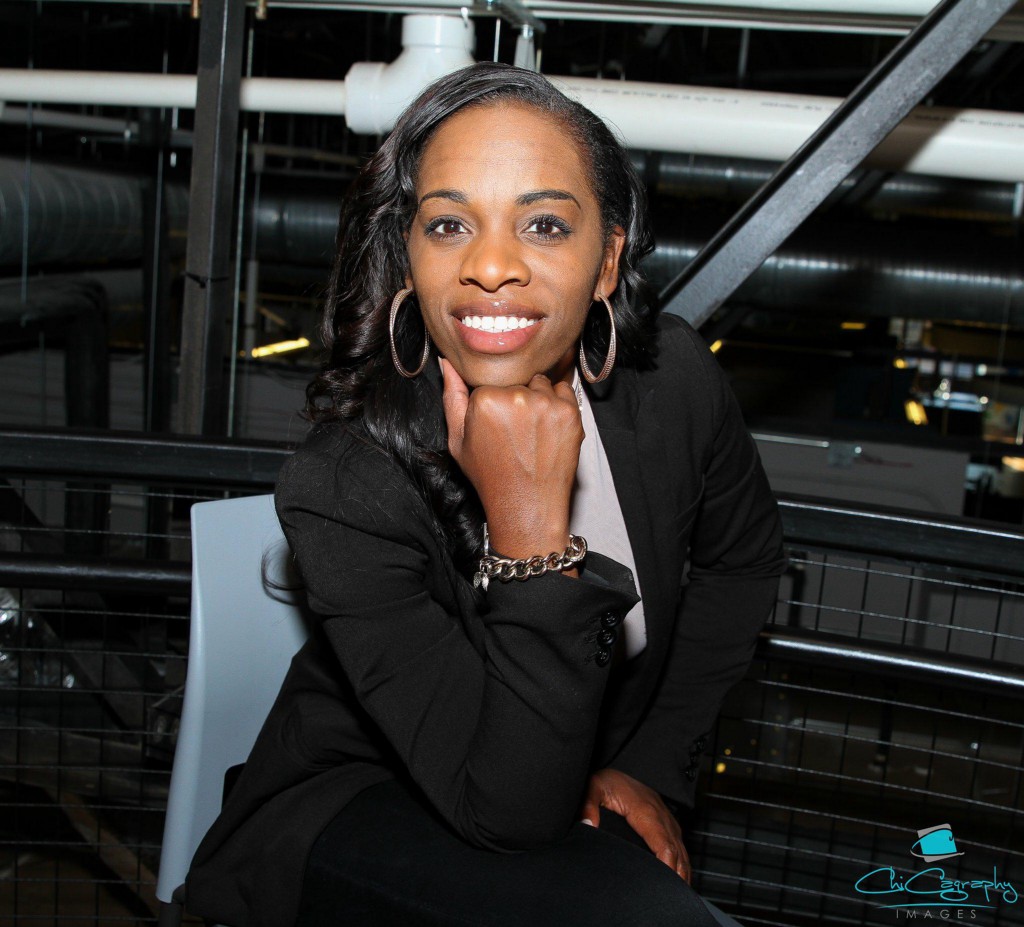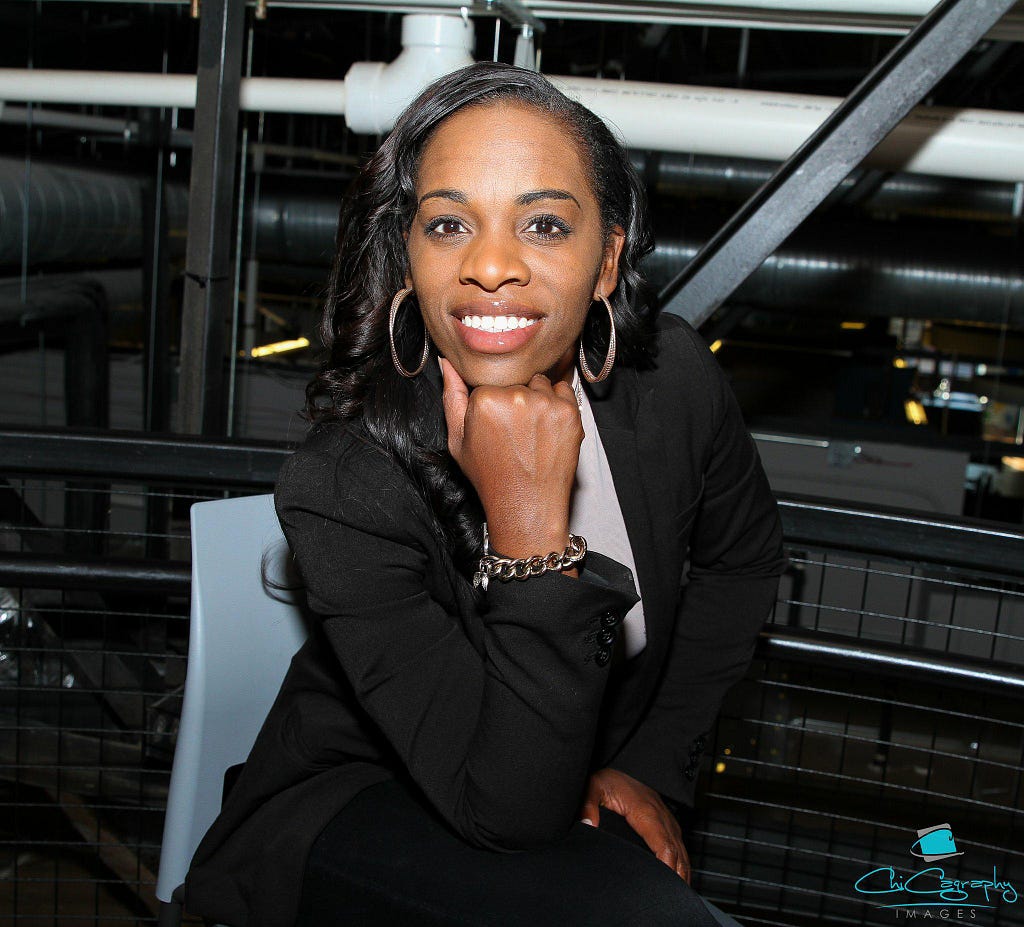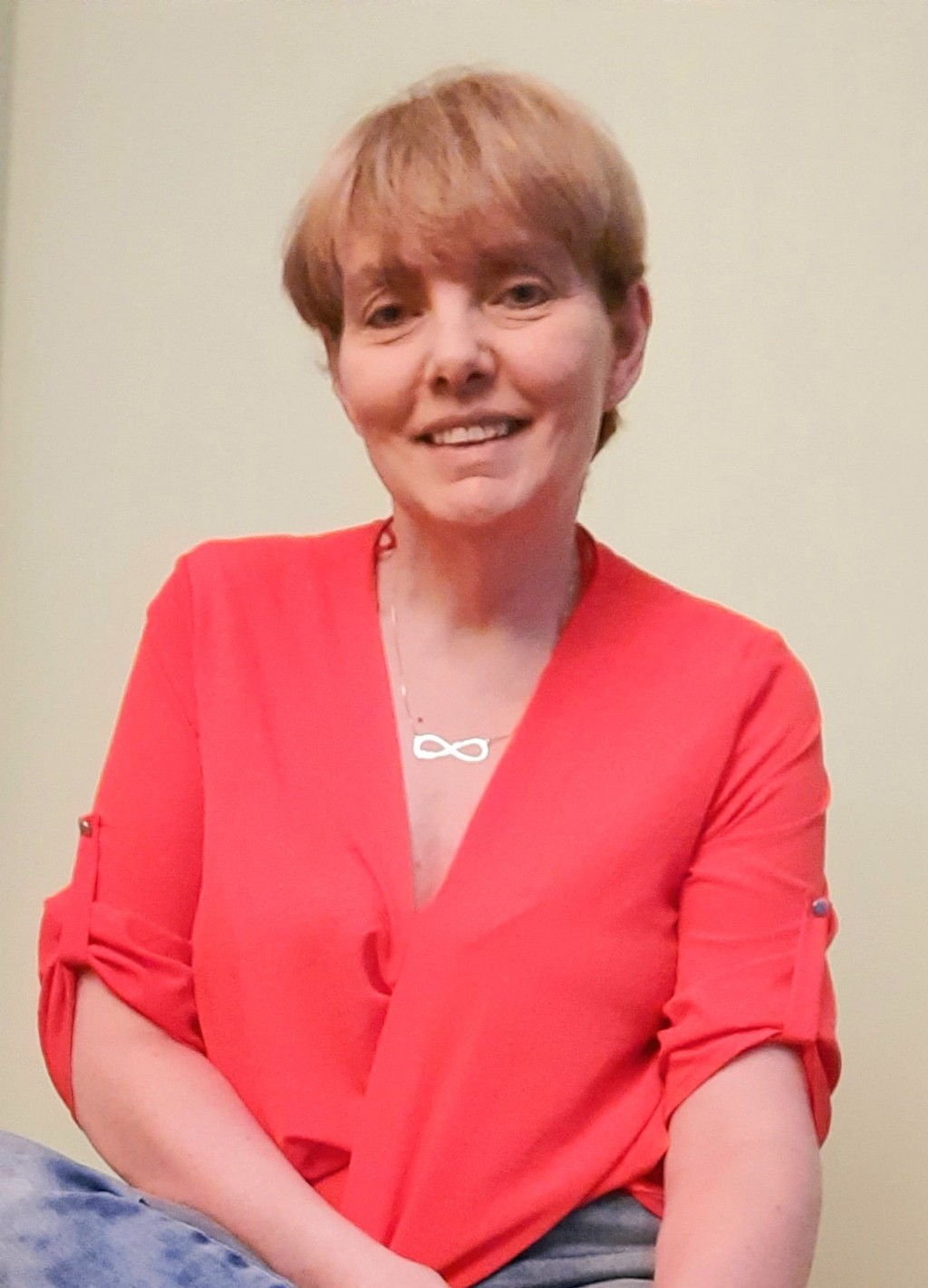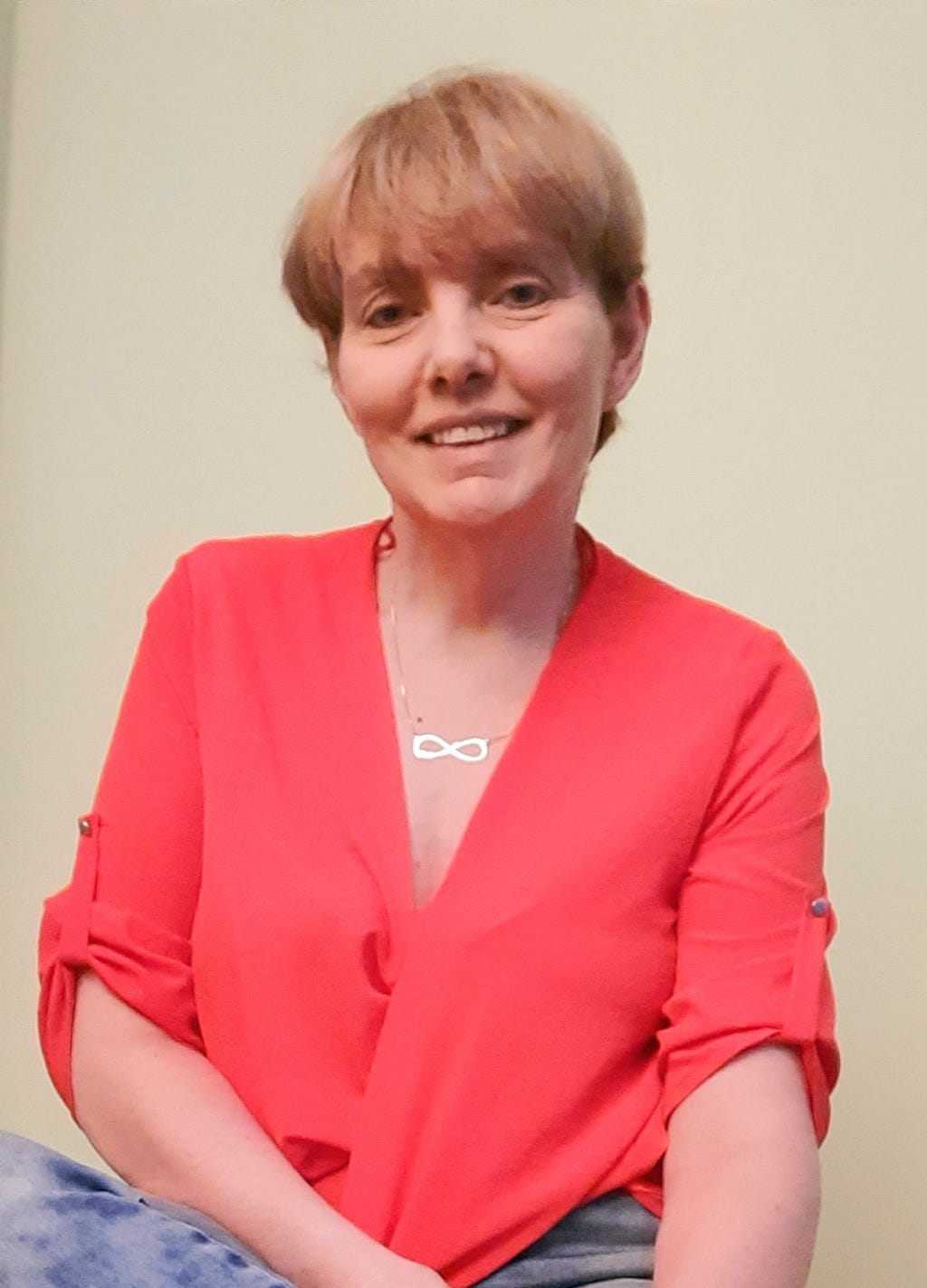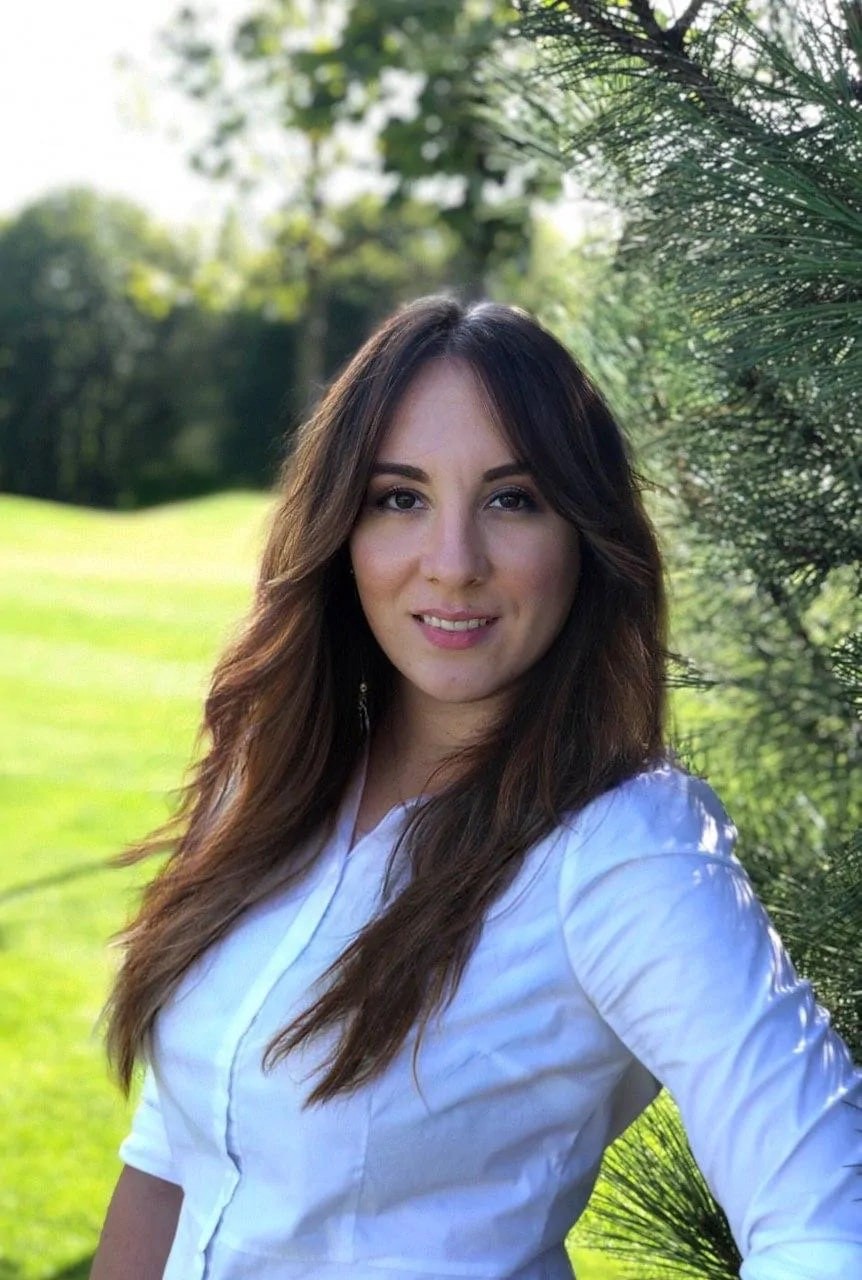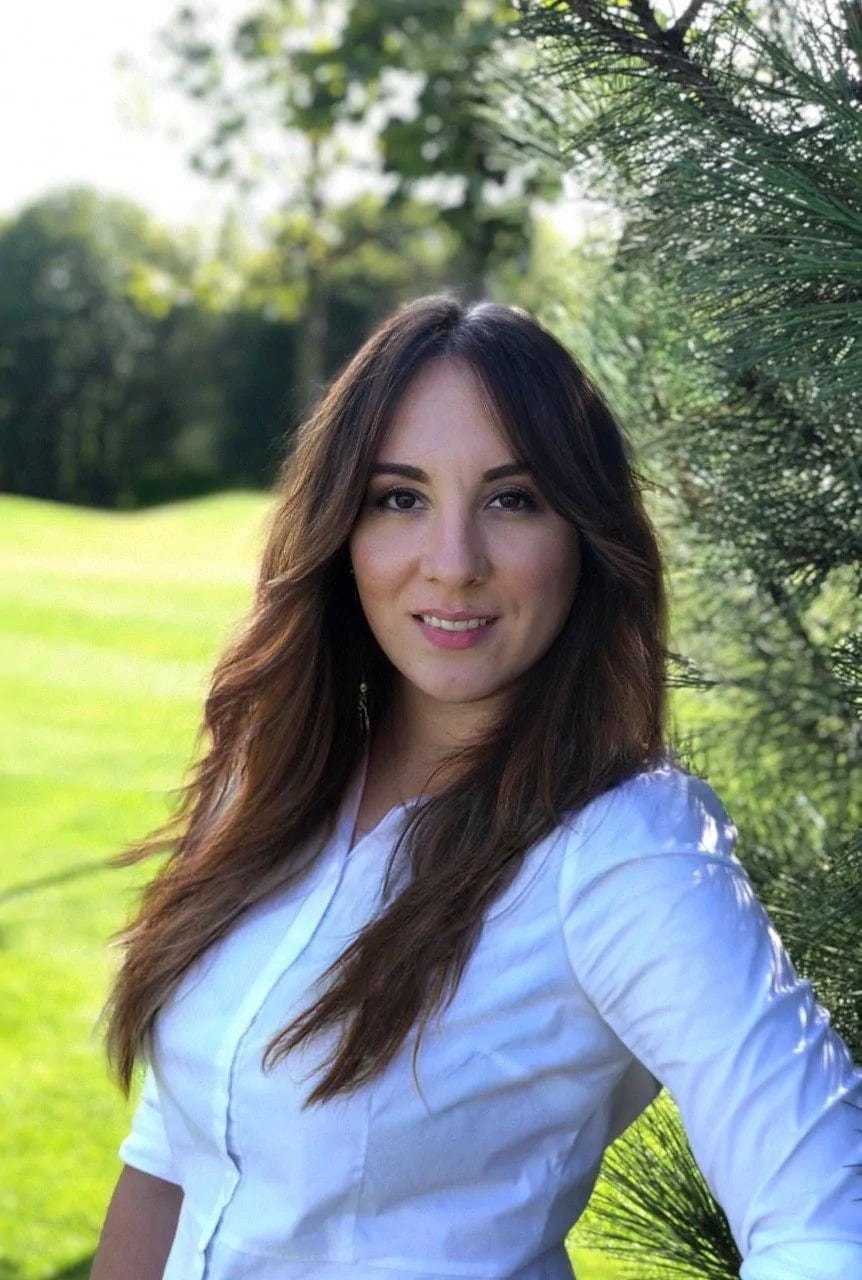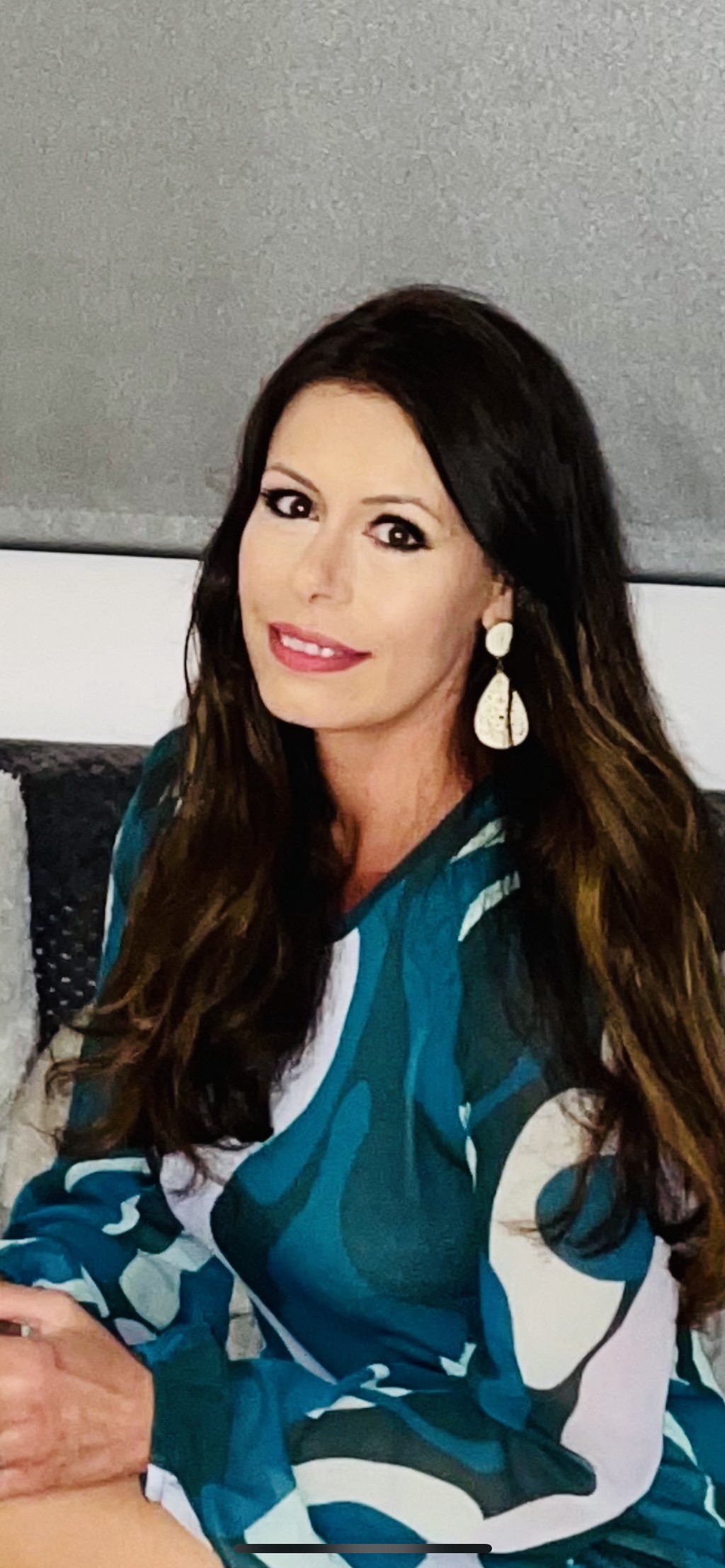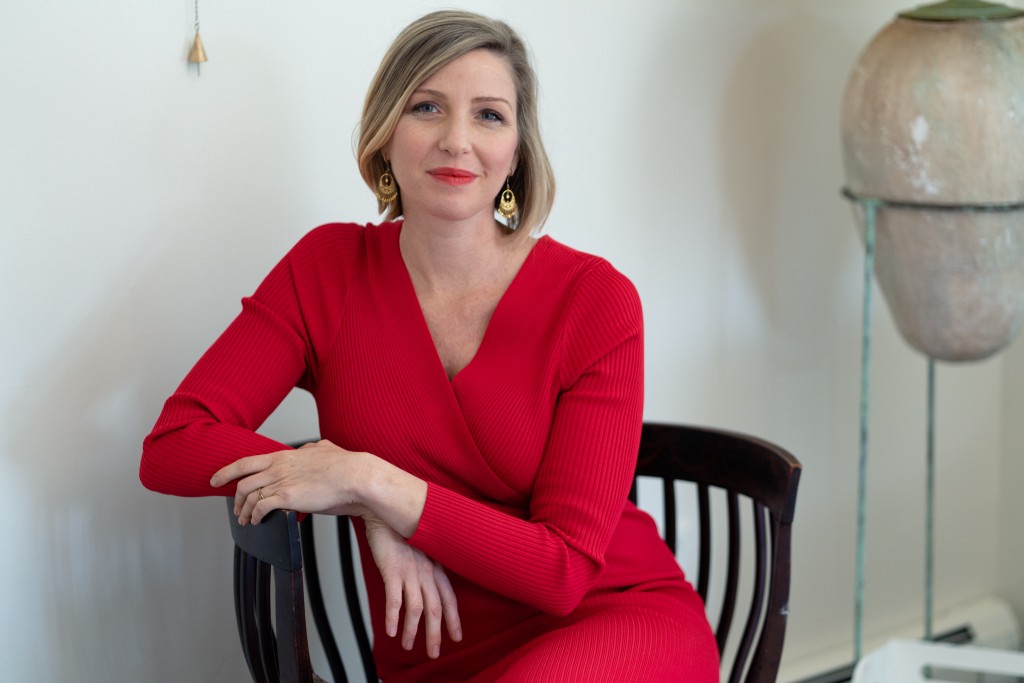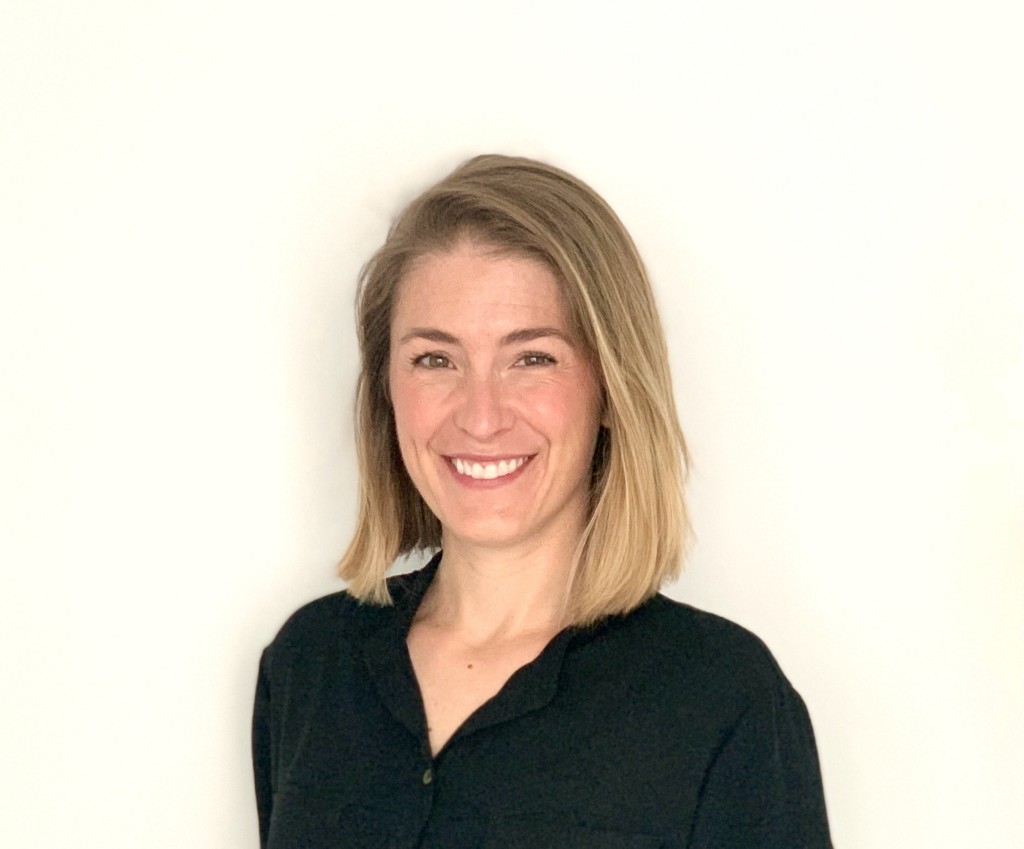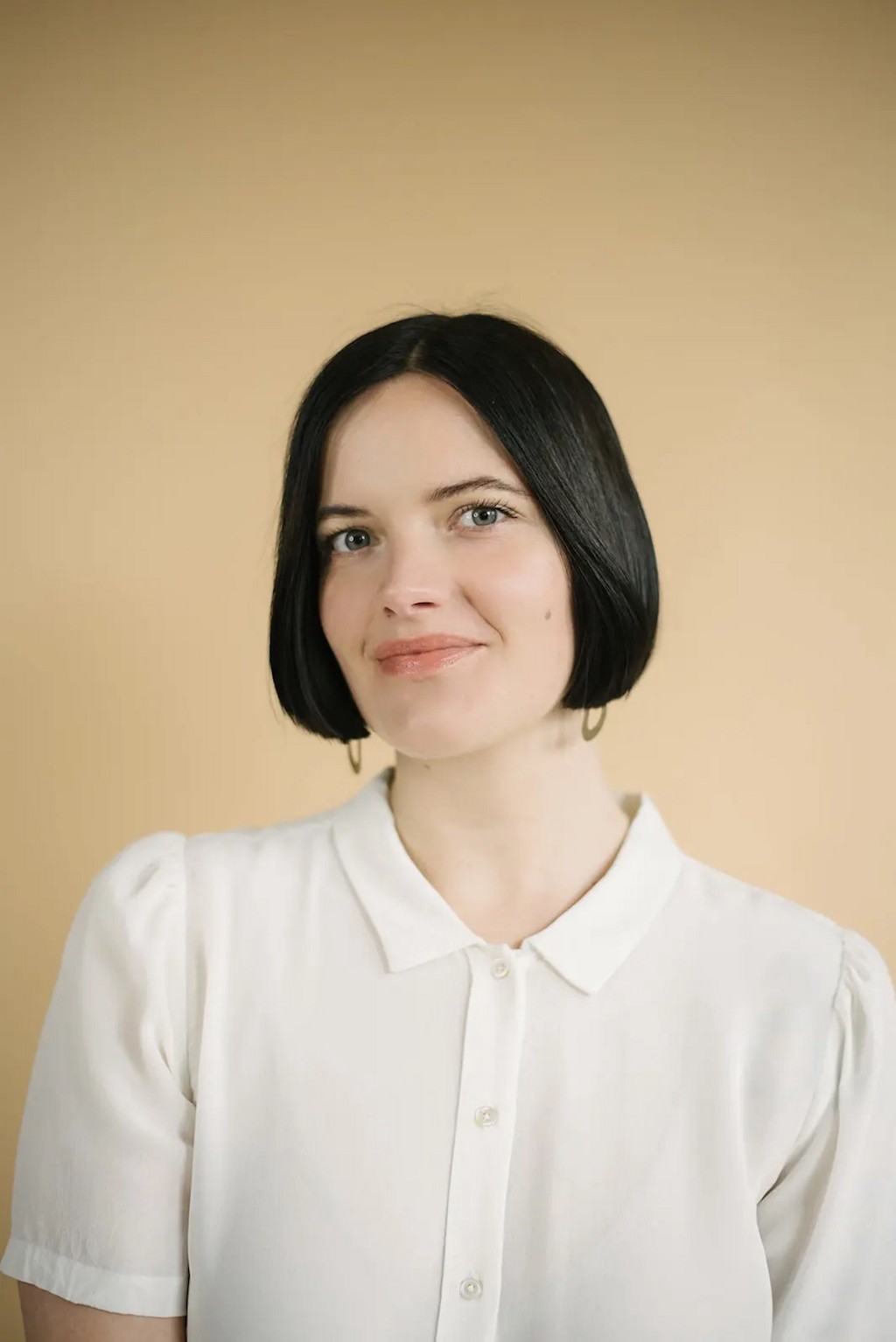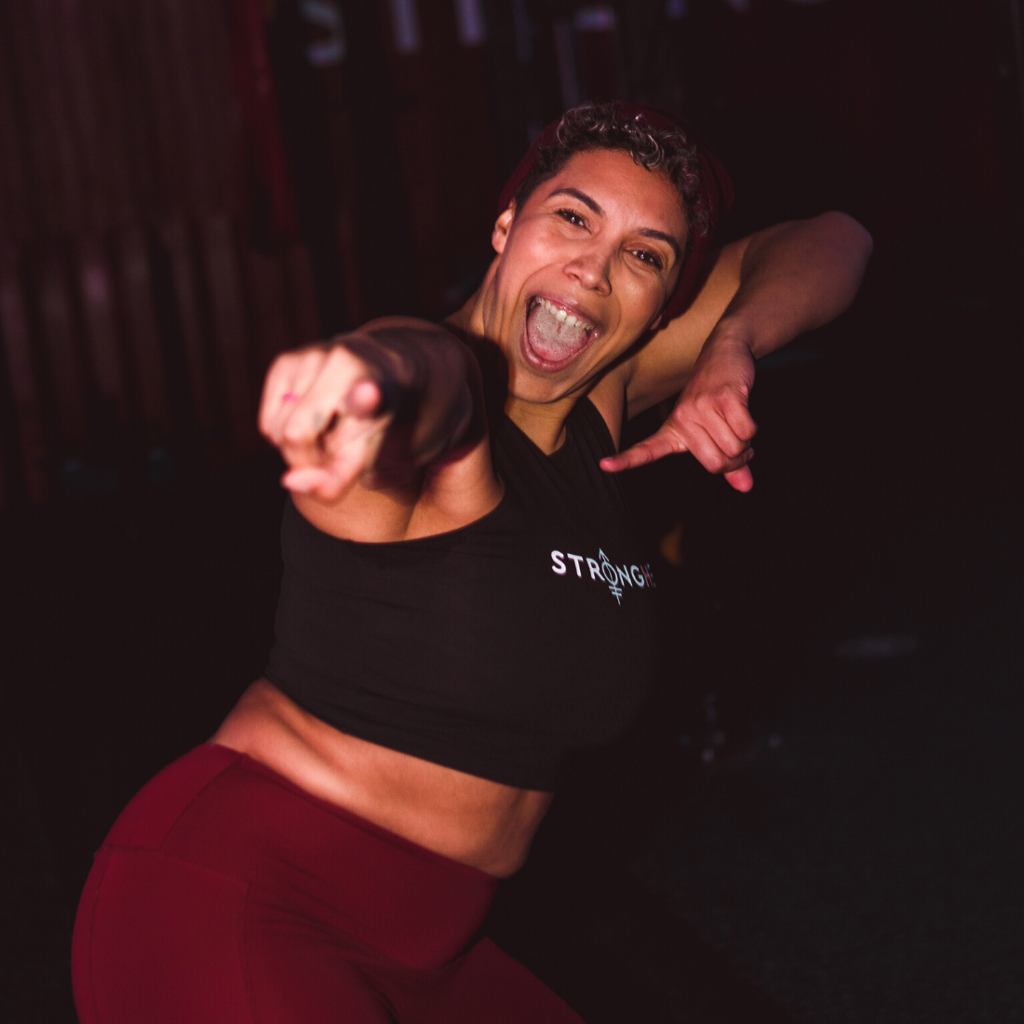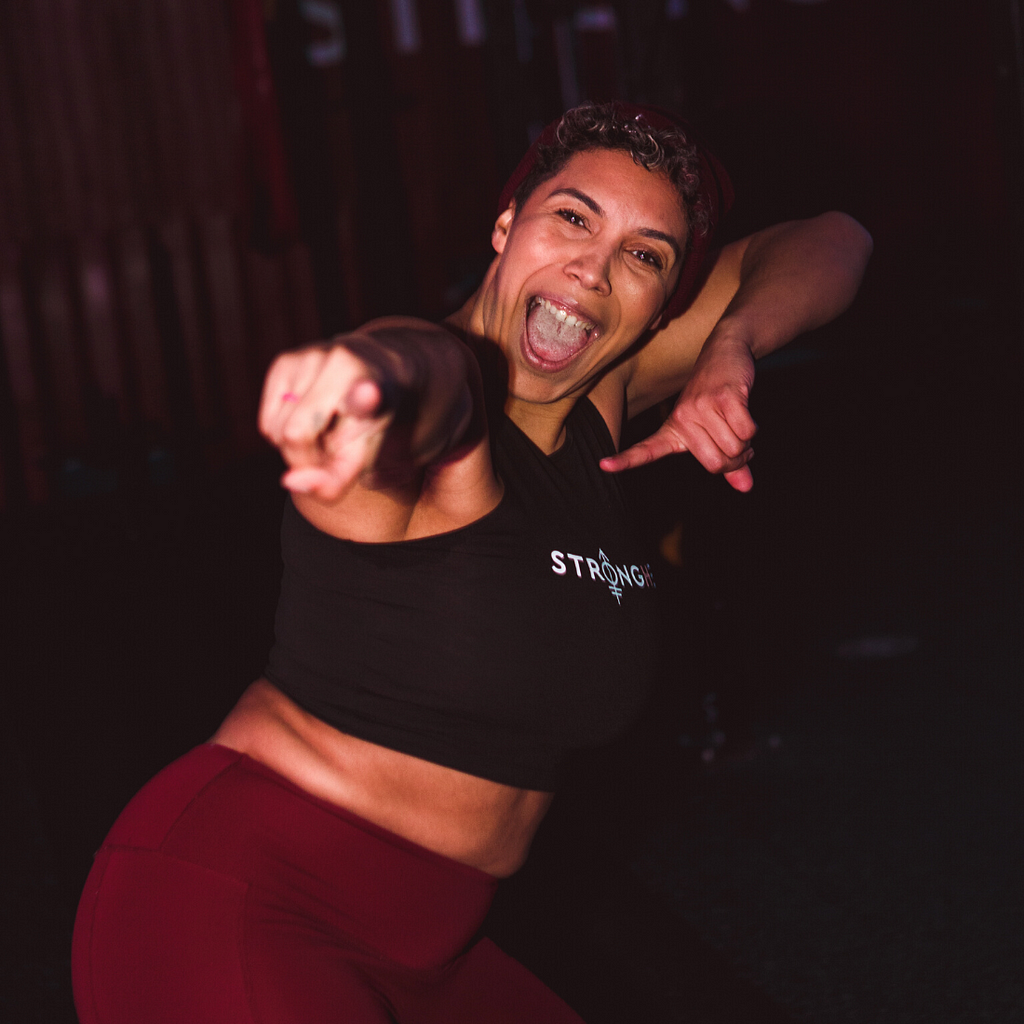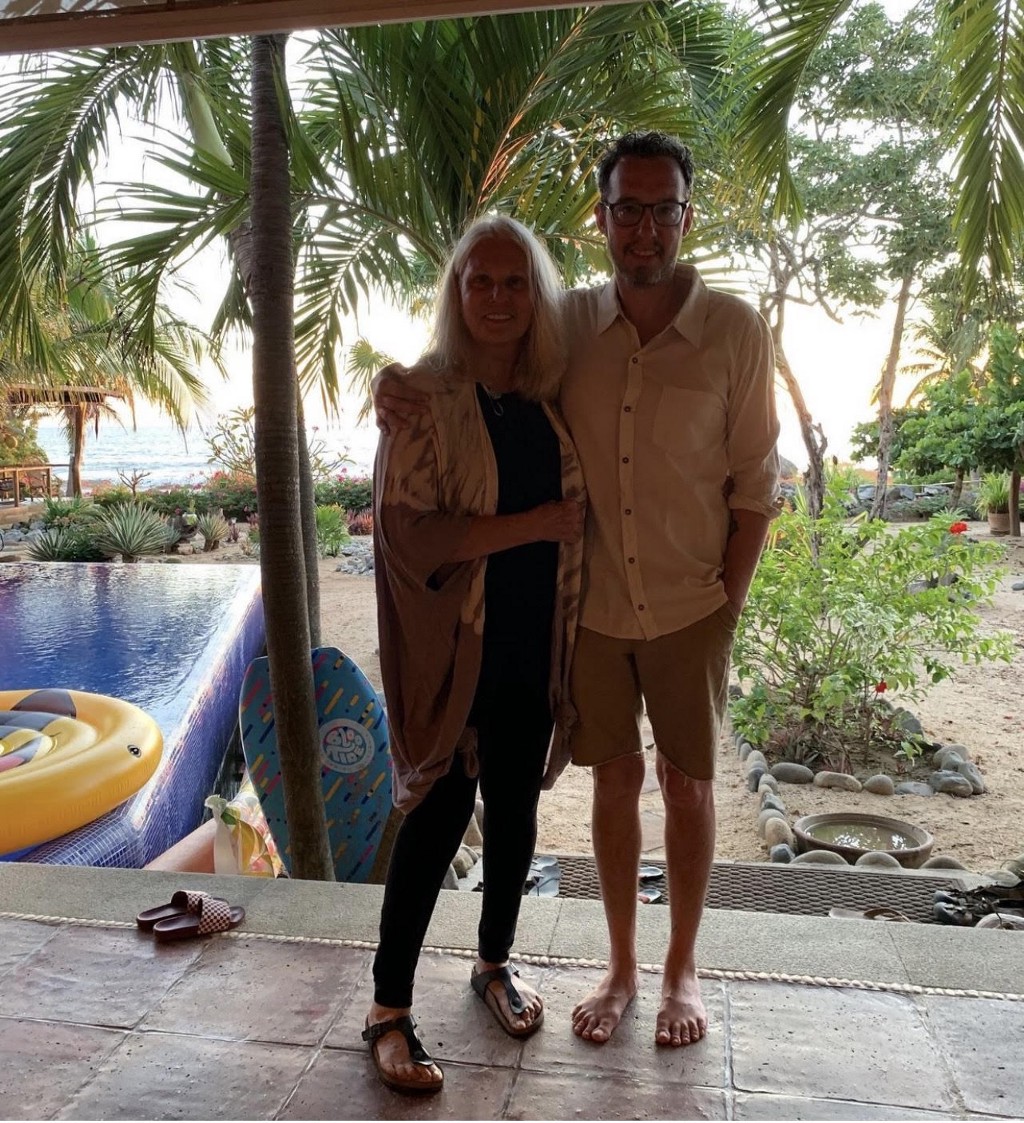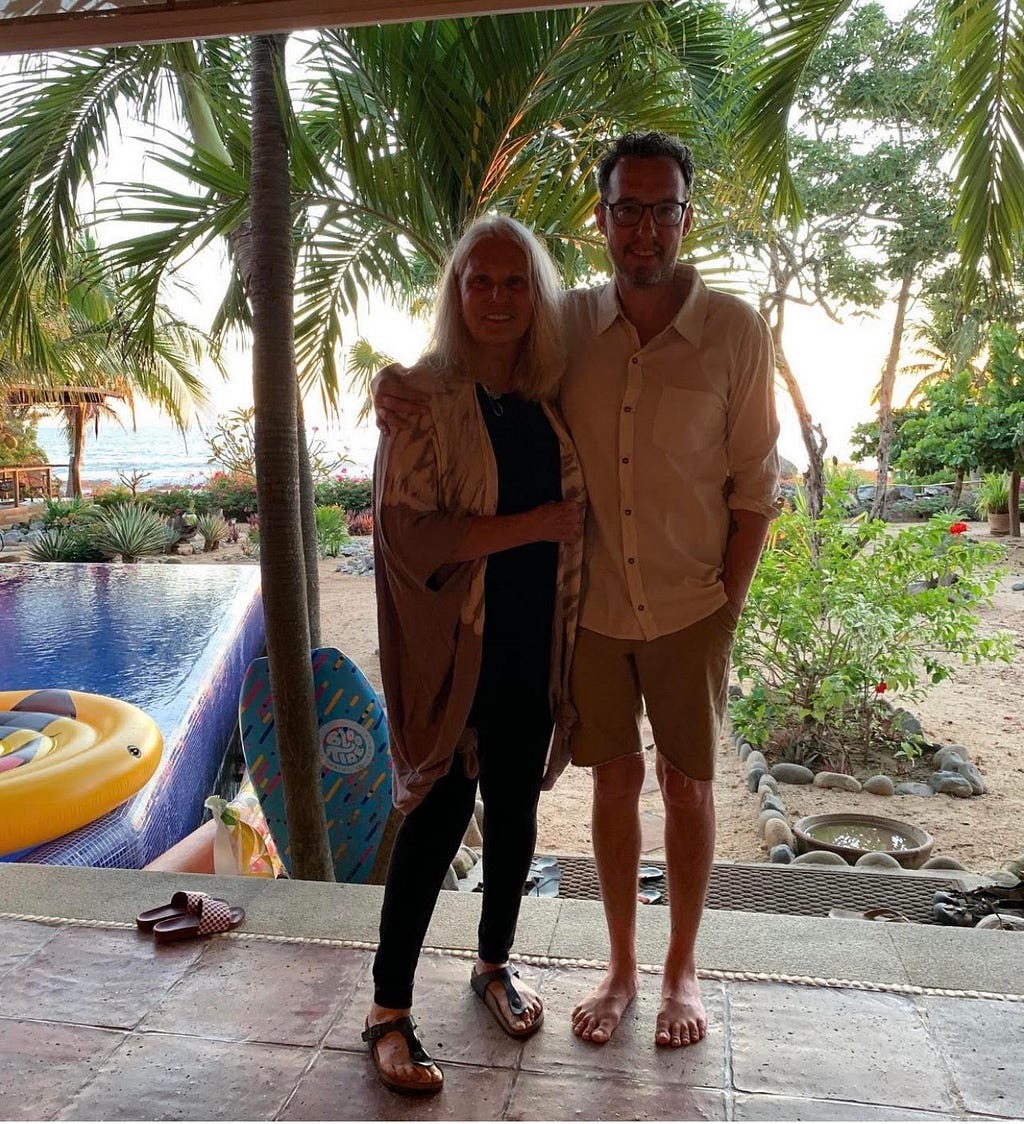An Interview With Candice Georgiadis

Create a Triple Win — The first thing I wish someone had shown me was how to create a Triple Win. You have to make sure that your company is winning and that your customers are also winning. Plus, all the people who do business with you. And your team. We all have to win.
As a part of our series about “Why We Need More Women Founders,” I had the pleasure of interviewing JB Owen.
JB Owen is a fearless female leader and a believer in the power of empowerment. She is a world-class speaker, 17-time bestselling author, and powerful business owner who has published over 700 authors, turning them into international best-sellers. JB’s true focus is on helping others, which is why she started Ignite Publishing, the leader in empowerment publishing, in 2018.
Thank you so much for doing this with us! Before we dig in, our readers would like to get to know you a bit more. Can you tell us a bit about your “backstory”? What led you to this particular career path?
I’ve always loved writing. I started out writing poems and little vignette stories in elementary school. My mom was a working mom, so I would take the bus to her office after school, and to pass the time, I would play on her secretary’s typewriter. I loved seeing the letters show up on the page and the sentence fill up the paper so I could press the ‘return’ button that would make the typewriter zoom across the page and back to the start where I could write more. I always wrote fantastical stories with lots of imagination. It was a way for me to escape and, at the same time, be super creative. I’ve always enjoyed storytelling, and I felt that, as I immersed myself more and more into self-development and personal growth, sharing stories of awakening and transformation would be the true healing path for myself and others. I saw how stories help heal us, especially when working on our own stories and personal journey. It’s the natural path to transformation and inner personal connection, and I wanted to build a company from these principles.
Can you share the most interesting story that happened to you since you began leading your company?
Every time we launch a book, we head to somewhere beautiful like Prague, Croatia, Los Angeles, Toronto, and San Francisco for a fantastic book launch. At our Book launch for Ignite Female Your Leadership, we rented a 70-year-old wooden, handmade pirate boat and traveled through an amazing stretch of ocean in Croatia. We explored secret underwater blue caves that were hidden and could only be found by the locals. All of the authors, including myself, jumped off the boat to swim through these caves. Once we were inside, we all held hands and made the sound of ohm. The sound echoed throughout the cave, and it was just such a beautiful moment of connection. Everyone there had written their story, achieved a goal, and was on this exciting adventure. That moment allowed us all to connect in this remarkable place that few people on this planet get to experience. We all took a moment to center ourselves and bask in our accomplishment, our glory, the beauty of being alive, and the magic of nature. It was a monumental moment.
From that day on, I saw how vital it was to make a deeper connection and manifest ways to do something unique that would stay in their minds and hearts forever. This showed me that business goes beyond just ‘working’ with people. Business means more than just doing work and should be a gateway to lifelong relationships and epic experiences. You can build a much deeper connection and create memories that touch your very core.
Can you share a story about the funniest mistake you made when you were first starting out? Can you tell us what lesson you learned from that?
It’s not really a funny mistake, but we did have a book published with a spelling mistake on the cover. We went to print, then launched and published thousands of copies of the book. Only after that did we discover the spelling mistake on the front. What was so interesting was that we had the book cover ready and, before we went to print, everyone on the team saw it, all the authors saw it, media outlets saw it, everybody saw it, and nobody for months noticed or mentioned it! It wasn’t until one author caught it and sent us a photo in an email that we realized. From there, it was like a domino effect. As soon as the first person noticed the mistake, everybody noticed the error. All we could do was admit our mistake and have a good laugh about it. We laughed because everybody just read the word as if it was spelled correctly instead of incorrectly for so many months.
The word was ‘adventurous’ spelled ‘Adventrous.’ We eventually went back and found out that it was an error by the factory. We couldn’t blame the factory, though. Human error happens. We decided the only thing to do was own up to our mistake. We put out a fun press release, a video, and then we reprinted all the books and gave the authors new copies. We just owned it, and it was an excellent turning point at the beginning of the company. The lesson we learned from that was not getting upset, not hiding behind a mistake, and not blaming the factory. We didn’t ask them to pay for fixing the error; instead, we agreed to pay for the cost to reprint everything for all our vendors. We decided to make the best out of it and keep good relationships. We always want to supply our authors with everything they could ever need, so of course, we had to make it right for them and all our readers.
That experience reminded me to always live with impeccable intentions, create good business relationships, and serve my customers in the best way possible.
None of us can achieve success without some help along the way. Is there a particular person who you are grateful towards who helped get you to where you are? Can you share a story about that?
It’s been a super joyful privilege to work with the amazing Les Brown, the #1 motivational speaker on the planet. He is a fantastic mentor and supporter. He’s a heart-centered, wonderful, and loving person to work with. He is the kind of person you feel excited and grateful to spend time with. Last year, we worked closely to publish Ignite the Hunger in You, one of our international bestselling compilation books, with 36 other authors. Les was involved in every step of the process to help teach the authors how to become speakers and grow their speaking platform.
Les Brown has been someone I have wanted to work with for years. I kept putting out feelers and asking around to see who knew him so I could connect with him. Eventually, we met, and I started working and mentoring with him; I sent him a proposal and waited to hear back.
One day I got a phone call, and it was an unlisted number, so I was apprehensive about picking it up. But I did, and the person on the other end asked, “Is this JB Owen?” At first, I thought it was a telemarketer, so I said yes in a not-so-pleasant way. I had a bit of an attitude. But I changed my tune when the voice said, “Can you please hold on the line for Mr. Les Brown?” My answer, of course, was “Yes!”
Les got on the phone and started talking to me about my proposal and said he loved it and wanted to work together. I was so delighted. It was a beautiful ‘wow’ moment for me. He then said that he was about to go live on his Facebook page and invited me to talk about my company and what I do. Wow again! I quickly said yes.
When we went live, his producer asked me not to mention anything about the book because the contract hadn’t been signed yet. But when we went live, the first thing Les said was, “Good evening, ladies and gentlemen. This is Les Brown. Today’s guest is JB Owen, and we’re doing a book together.” He announced it to his 2 million followers right at that moment, and we were off to the races! From then on, it’s been a fantastic experience, and he’s become a close and trusted friend and a father-like figure in my life.
I’m also super grateful to my husband, Peter. He has always been a fantastic support. He always listens to me as I share my thoughts, ideas, and suggestions. Whenever I want to create something more for our authors or have an idea to take the business to the next level, he is always in. I’m forever coming up with new opportunities to give to our authors, ways to have fabulous book launches, design new products, and go that extra mile, and Peter is there consistently.
I have to be honest; it’s so powerful as a business owner to be working with somebody who supports you in your vision and is a ‘yes’ every time you need to make that extra leap to push the business to the next level. My husband Peter is that person. At the same time, he participates in every way possible and does his very best to be an absolute pillar for the Ignite community and all of our authors. He is truly the wind beneath my wings, and I am deeply grateful for him.
Ok, thank you for that. Let’s now jump to the primary focus of our interview. According to this EY report, only about 20 percent of funded companies have women founders. This reflects great historical progress, but it also shows that more work still has to be done to empower women to create companies. In your opinion and experience, what is currently holding back women from founding companies?
I think there are many things holding women back from founding companies. Some of it, in my opinion, stems from the idea that since the beginning of time, women have been in groups, surrounded by the other women in the village, and doing most of their work as a collective. Historically, women love to be around other people. We love to do things in collaboration; we love to support those in our circle. So when you want to start a company and do something revolutionary and innovative that no one has done before, women need to push out of the group and become the leader. Women need to be willing to do it independently because not everybody will agree with their idea or be ready to go out on a limb and do something that has never been done before.
I think many times, women, in our innate desire to be in a collective, have to push through that to decide they’re going to become a founder. When you’re a founder, you’re often doing it on your own, to begin with. You’re a solopreneur to start. You have to take on multiple roles in your company and wear many hats. You’re not always in that collaborative, co-creative environment until later in your business, when you start bringing on a team and aligning with other companies. There’s that moment in your business where you have to do it yourself. For many women, this is counterintuitive to some of the ingrained habits that we hold.
Being a founder and starting a company requires a woman to push forward and work on her skills, knowledge, and abilities to succeed. It takes a unique individual with great courage, tenacity, and perseverance to step outside her comfort zone. She has to know that she can do this and work on her own until she can grow and create a group of people around her who will support her business. Women need to push past their limiting beliefs and let go of the need to stay in the safety of the group.
Can you help articulate a few things that can be done as individuals, as a society, or by the government, to help overcome those obstacles?
I’ve been truly blessed to be an entrepreneur for three decades, and I can tell you that there was a time when being a woman in business was very awkward and not at all easy. When I was younger, I started doing a lot of business in Asia and would travel there to work with factories and business owners. Because my name is JB Owen, they often never expect to meet a woman. I would be picked up at the airport or show up at factories, and the entire company would be in shock that I was a woman. They were not accustomed to someone like me coming to Asia and being in charge.
There are some societal stigmas about female business owners, and I believe it has improved immensely over the years, but we still have to change the stereotypical opinions. It’s no longer women staying home to raise their children and men in the workforce. Women are running great companies in government and pushing boundaries in all industries to indeed make a difference.
What has to happen is that women need to step forth with their business ideas and be willing to speak up at business meetings, in production areas, at legislative arenas, and be the source of the change. I think it’s up to us to put our hands up in the room and speak our minds. It’s a part of the evolution of humanity.
In the time I’ve owned businesses, so many of the barriers women face in business are breaking down, and endless doors are opening up. It’s all possible for women. We can start businesses, lead companies, and inspire people, and we do it from what I call the fierce, fabulous, and feminine mindset. Women bring a very valuable and, I believe, essential female energy to a company. We can lead from the feminine instead of the masculine energy and run companies successfully. We just have to have the courage and willingness to do it and know that every time we make an effort to move the needle forward for women in this generation, we pave the way for women in the next generation.
This might be intuitive to you as a woman founder, but I think it will be helpful to spell this out. Can you share a few reasons why more women should become founders?
This goes back to my previous answer on why women aren’t founders is because we love working in groups. That being said, I think one of the reasons more women should be founders is because, intuitively, we love to work in collectives and love to have a lot of people around us. We like co-creation instead of competition. More women should become founders because they come from a place where they ask, “How can we all co-create?”
I feel many women bring the mindset to create what I call the ‘Triple Win.’ How does the company win? How does the client win? How does the client’s client win? How do my products help me but also help others? When I help people, they can help even more people because of the products that I create. Using the Triple Win, you impact 3x the amount of people, and, if you do it well, 4x, 5x, even 6x and more individuals will benefit.
I always ask myself: How can what I do be beneficial for my family, my team, and their family, then my community, my country, and humanity as a whole? Women ask themselves this question frequently in business because of their innate nature to foster success inclusively. More women should be founders of companies because we have this inherent want and willingness for a Triple Win. It’s not about domination or competition; it’s about asking, “How do we create something that is benefiting more than just one person?” Women have that in them. They desire to see the group win, not just the one person succeed. They foster and cultivate those around them and nurture a process until there is a definite win/win/win.
It is very much like a family when it comes to an organization. There is the potential for everyone to go beyond a hierarchy and instead be a unilateral community. I think women, in general, really support that in business, which leads to more business success.
What “ myths “ would you like to dispel about being a founder? Can you explain what you mean?
Many people feel like founders just organize and tell everybody what to do when running a business. This is not the case. When you found a company, you need to do every little thing. You need to know what’s happening in the mailroom as much as you need to know what’s happening in the boardroom. You need to be aware of every facet of your company, and you need to know how to do those skills because you can’t hire people, inspire people, or even let people go if you don’t know what their job requirements are. It isn’t good as a leader if you don’t understand all the skillsets and are not privy to the metrics in every position within your company.
Founders have to know how to do many things. When they start their company, they end up doing it all, and they end up putting in the work and putting in the time. It’s not about telling everybody else what to do and just sitting at the top and delegating. Many founders do multiple tasks in their business, especially when they start. They do everything that is required. That is the most important thing as a founder. You need to be aware of every facet of your business and teach yourself and educate yourself on what is needed in that sector of your business.
As your business grows, you want to hire the best people who know more than you in their area so that they can uplevel your business. But you’ve got to know what the requirements are and what the responsibilities are so you can hire the right people. Then you can grow that company’s division by being aware of how to expand because you now understand what is required in that role.
Is everyone cut out to be a founder? Can you explain what you mean? In your opinion, which specific traits increase the likelihood that a person will be a successful founder, and what type of person should perhaps seek a “regular job” as an employee?
I’m not sure people are born to be founders. Therefore, it’s not for everyone. But I think that anyone can be a founder if they decide to do so. Being a founder is about making that choice wholeheartedly. It does take work, tenacity, and effort. It takes ambition and aspiration. You’ve got to have a cornucopia of desires that will push you forward. You have to understand your “why.” Why are you doing it, and how will it benefit you and others?
I think that anyone can be a founder if they decide to put in the time, the work, and the effort. If you’re willing to teach yourself, expand your awareness and acquire the tools and the skills you need to be a founder, then absolutely anyone can do it. But you’ve got to have the desire. People who want just to punch the clock, have time off, or only put in 50% of the effort, people who don’t see the vision or lack the willingness to try something new, are not the people who will found a company.
I believe anyone can be a founder if they’re willing to put in the effort. If you decide to be the kind of person who chooses to follow their dreams, go after their aspirations, and call the shots in their life so that they and others can have the best life possible, then I think that’s the material for being a founder.
Ok super. Here is the main question of our interview. What are your “5 Things I Wish Someone Told Me Before I Started” and why? (Please share a story or example for each.)
The five things I wish somebody had told me before I started my company are essential components of running my business. My company has always put heart and authenticity at the core of our work.
#1 Create a Triple Win
The first thing I wish someone had shown me was how to create a Triple Win. You have to make sure that your company is winning and that your customers are also winning. Plus, all the people who do business with you. And your team. We all have to win.
When I started working on my business, I didn’t always understand that. Earlier in my career, I had a very successful seven-figure business, and, as I filled my management team, a very masculine energy and approach began to dominate. The company mandate shifted from supporting our customers to creating profit and cornering the market. As that happened, I felt like the company shifted into a position of “what’s in it for us?” and “How can we win?” and “How can we dominate?” versus how can we be the best in our industry at serving our clients.
I let go of that very successful company because I wasn’t practicing it, and the management team wasn’t aligned with the desire to create a consistent Triple Win. I ended up walking away from that company and shutting it down because the corporate values were not in alignment with me anymore.
At Ignite Publishing and Ignite Moments Media, it’s mandatory that we as a company win by doing what we’re good at; Igniting others. But we can’t be the only winners. Our authors win by telling phenomenal stories. Our readers win by reading stories that will help transform their lives. The people around those readers will win because they live their best lives. By my count, that’s a 4x win.
We’ve continued to grow this ideology and added another layer. We’re creating even more wins by donating our online book sales to build Cambodia’s Ignite Possibilities School of Hope. We’re helping to provide support and education to underprivileged children who need opportunities and education to better their lives. The children benefit, but so do their families, community, and even their country because we’re creating a generation of kids who have the training and literacy to support their communities and lift themselves out of poverty. When those kids grow up and make a massive change, the planet and humanity will win also.
The Triple Win, or perhaps now the 4x, 5x, 6x+ win, is something I wish I had known about all along. A Triple Win has become a mandatory thing in our business.
#2 Make it transformational, not transactional
The work you do has to be transformational, not transactional. For a long time, especially working in the service industry where the main goal is to exchange products for dollars, I was drained by the very transactional experience of it all. I’ve learned in my business now that when you transform the customer, you make a customer for life because, inherently, each of us as human beings has the desire to evolve. That desire is encoded in us. We love the feeling of expansion and evolution. As a business owner, when you create a product or a service that gives the customer an experience of transformation, that they’re going from one place to the next, people will love it. When you focus on transformation over transaction, there’s this expansion; there’s a feeling of progress. Now you’ve created an emotional and visceral experience in your customer instead of just a transaction of goods.
One of my favorite books, The Science of Getting Rich, by Walter D. Wattles, talks about how you must always give your clients more ‘use’ value than the ‘cash’ value they spent. You work toward increasing the use value 100 times more than what they spent with you. For example, when we create a book, it may cost a specific amount based on the paper it’s printed on, the quality of the book jacket, and the materials used to produce it. We put a price tag on it, and that’s the cash value of the book for our customers. But the use-value is10x times what they paid. We make sure all our products, services, and training yield unlimited use-value, and we work hard to keep increasing it. Use-value is the most crucial aspect of any product or service, and that is how a founder must think when being in business.
Everything you do must transform your customer, not just transact with them.
#3 It’s not what you say, it’s how you make them feel
It isn’t what you say; it’s what you do and how you make your customers feel. At Ignite, we do everything in our power to feed our customer’s positivity. We make sure they feel supported, inspired, and awakened. We want them to feel happy. We want them to feel joyous. We want them to feel accomplished.
We don’t offer products and services to our customers without a purpose. We make sure we follow through and give them something valuable every time. We focus on community, so it’s part of our company’s purpose to inspire our clients and uplift them emotionally. We focus on transformation, so it’s part of our company mandate to educate our clients and motivate them internally. We focus on providing our customers with the most incredible and memorable feelings that will last a lifetime.
I’m always so delighted as a founder and business owner when we have authors whose whole lives have changed at the end of a book project. For example, we had a fantastic author who felt that she was not in a good place in her life. Her house had been burned down in a fire. She had left her toxic marriage, was starting from scratch, and healing from that trauma. She started working with us, and within a year, she had moved to England, had stepped into a fantastic new relationship, and was engaged! She started writing a trilogy of children’s books that have been published and won numerous awards. One of her books is currently being vetted to become a movie.
We’ve had hundreds of clients start businesses, create projects, build brands, and step into a greater version of themselves; why? Because through working with Ignite, they felt the necessary feelings to catapult them forward and prove that they could do it. They saw it was possible and felt the joy of getting there, and those feelings inspired more motivation to go after the next goal and reach it.
How you make people feel will motivate them to make a difference when they feel better about themselves. Their cup is full, and they have more time to go out and help others fill their cup.
#4 CEO means clear, excited, and organized
I like to think that being a CEO is all about being Clear, Excited, and Organized. You’ve got to be clear about what you want and about your vision. You have to have clarity in your decision-making. When you focus on what you want to achieve, you make that happen. You attract success when you have a conscious mindset, not one rooted in ego or competition. You can’t be distracted by what other people are doing, but instead, you have to be consistent in going after your goals and be clear about only that.
You’ve got to be excited. People love aligning themselves with those who have an energetic attitude. If you’re going to start a business, you’ve got to be excited about it. You have to have that passion. It has to be something that you would do whether you were paid or not. You have to throw back the covers every day, wanting to do it, and be excited doing what it takes to get there. That effervescence and enthusiasm makes people around you excited and energizes your customers because like attracts like. Energy wants to be around more energy. When you provide that consistent kind of energy as the leader of your company, your customers, your team, and your community will rally around you to make an impact.
Most importantly, you’ve got to be organized. Organizing allows you to build lasting systems for success. We’re currently working with Michael Gerber, the author of The E-Myth, who will share his ‘Ignite Moment’ in our next book: Ignite Legacy. His entire philosophy centers on creating structures and systems to organize your business for success. Organization is a pivotal quality for a CEO because there are so many things happening every day, that you need to be ready to quickly and effectively make the best decisions for your business. Being organized is also the only way to scale, advance, and succeed.
You have to practice and work at being organized every day. Being organized comes via training yourself, learning new tools, creating new ways to be efficient and productive. Explore different tools that will help you be organized and empower your team to build off what you have made. Take the time to empower yourself with apps or computer programs that foster systematization.
I wish someone would have told me how it’s not about being a boss or a manager, but the true embodiment of a C.E.O. You’ve got to be clear and excited, and organized every day in your business.
#5 Hire people who are experts in their field
Hire people who know more than you in their area of expertise. I always ask people in a job interview, “Tell me about your zone of genius.” because I believe that every single person has their niche knowledge and intelligence. John Maxwell talks about the ‘law of the lid,’ which means you have to be willing to hire people who know more than you to lift the lid on your mindest and expand what you do.
Sometimes business owners hire people who don’t know as much as they do because they want to feel safe knowing more than their team members. But hiring people who know less than you doesn’t challenge you or push you, and there is no one with the expertise to elevate some of your decisions and teach you what you don’t know, you don’t know. You want to hire people who know more than you in their area so that they can help you expand your business.
As a founder, I can’t be an expert in everything. I can be good at what I do, but if I want my business to grow, I have to find incredible people and support them to help advance the company. I am a huge proponent of hiring people who have their own ‘zone of genius.
JB’s 5 Things- https://youtu.be/GLDQxeUlR00
How have you used your success to make the world a better place?
At Ignite, we have a scholarship program where we support authors who are coming through our program but are facing financial difficulties. We’ve published over 115 authors who have participated in our scholarship and bursary program. We are very proud to offer financial help to allow people with great stories to reach their goals and succeed in their desire to become published. It creates a ripple effect that benefits the world around us. I know this makes the world a better place because when people live in the center of their dream and connect to their purpose, they support and help those around them do the same.
We also believe in providing children worldwide with the ability to become educated and literate. I would want everyone on this planet to get access to education and become the changemakers and visionaries of the world. That vision has inspired us to build the Ignite Possibilities School of Hope in Cambodia. This school will provide access to education and literacy to hundreds, even thousands of impoverished children. This is our passion project, and it means so much to us to use our work to create an impact on this scale. We currently take all the online proceeds of our books and fund the materials needed to build the school. Every dollar brings us one brick closer to building this school of dreams.
Our next initiative will be building 12 schools in Southeast Asia through our upcoming Ignite Legacy book series. I believe strongly in this mission, and I am so committed to it I can see it unfolding. I know many children cannot attend a school or are trying to learn in makeshift schoolhouses where they’re sitting in the dirt without desks, blackboards, equipment, or books to support them. They lack a proper learning environment, which can easily be solved if we work together to make a difference.
I have a vision of building these schools because I know that many of the children who will come through these schools will do great things and significantly impact humanity. These children will be the change-makers in the world if we give them the opportunity. Learning in a safe, clean, academic environment will empower them to go out and tackle some of the significant challenges on this planet. This is why I’m committed to building these schools. I want to give opportunities to children and leave a positive, powerful legacy behind.
You are a person of great influence. If you could inspire a movement that would bring the most amount of good for the greatest number of people, what would that be? You never know what your idea can trigger.
We love the written word, but we’re also so excited to transpose that into a film. Another project we are working on to inspire humanity and positively impact the world is Ignite Humanity, a documentary we are currently in pre-production for. This documentary is about igniting humanity and sharing how powerful the human spirit is. It’s about how people are strong and can overcome the trials and tribulations they have in their lives to step into a better version of who they were born to become.
The documentary will feature people who have taken some of their difficult ‘Ignite Moments’ and used them to do good in the world. At Ignite, we are storytellers, and we want to use those ‘Ignite Moments’ that have transformed a person’s life to connect people. We’re excited that people will see the faces behind the stories and recognize the beauty and intention behind the words. People will be able to hear the voices and see the emotion in a way that showcases the story of their Ignite Moment and how it has benefited them in their life. We’re focussing on people who are doing massively inspirational things to help others so that we can move the needle on making all of humanity more compassionate and connected.
We’re also currently developing a way for people to share their Ignite Moments called Igniteapedia. Our goal is that people will freely share their Ignite Moments so that other people can read them. We want to document, create, and collect the stories of people who have experienced a life-changing, Ignite Moment, and became better for it. We want to spark conversations, elicit change, and promote unity. And from that, we want to create opportunities for connection on a global scale. Maybe someone has had an Ignite Moment that was similar to another’s. Perhaps their journey was reflective of something you had been through. We believe people will find hope and healing through similar stories of growth, change, and enlightenment. When you find somebody who’s been on the same journey as you, that creates camaraderie and a possibility for an even greater connection.
I believe creating a space for sharing and connection through Ignite Moments can change the world. We want to be the place for people to find like-minded individuals with similar Ignite Moments so they can uplift and Ignite hope within one another. We want to give people the opportunity to share their experiences with others, so no one ever feels that they are alone.
Our mission is to Ignite a billion lives with a billion words and have 7 billion Ignite Moments shared. Yes, 7 billion! We believe every person on the planet has an Ignite Moment, and every one of them deserves to be seen, heard, feel loved, and belong to something greater because of it.
We are very blessed that some very prominent names in Business, VC funding, Sports, and Entertainment read this column. Is there a person in the world or in the US with whom you would love to have a private breakfast or lunch with, and why? They might just see this if we tag them.
One of our projects, called Ignite Legacy, is all about the world’s Legacy Leaders sharing their Ignite Moments around how they created a global impact that will last for generations to come. We have three Ignite Legacy books coming out: Ignite Legacy Leaders of Impact, Ignite Legacy Women of Impact, and Ignite Legacy Conscious Leaders Creating Impact. The idea is that every one of those books will show the Legacy Leader’s Ignite Moments that was the catalyst for their humanitarian projects. In conjunction with writing the book, they will build more schools in impoverished countries and share their legacy knowledge with the youth through our Legacy Library program.
We genuinely want to uplift and inspire the generations to come. We know if we teach young minds to be thinking about legacy from the beginning, we can instill the principles of creating a lasting future for everyone. The vision is focused on what we can do now to secure a great future for all of humanity; learning from Leaders is paramount for our young.
If I could sit down and have breakfast with anyone, it would be with all the Legacy Leaders on the planet who are working towards building an all-inclusive future. To be even more specific, I would love to get the chance to speak to the Dalai Lama and ask him what his Ignite Moment is. I dream of including his Ignite Moment in our upcoming Ignite Humanity project. I would also love to meet these people, who I believe are some of the true Legacy Leaders of our time: Tom Bilyeu and his wife Lisa Bilyeu, the Queen of Jordan, Evan Carmichael, Angelina Jolie, and Meghan, Duchess of Sussex, just to name a few people who have gone beyond fame and recognition and are instead working towards impacting people’s lives on a global scale.
Those interested in creating a legacy are the people I am inspired by. I’m a big proponent of the idea of not giving people fish but instead teaching them how to fish to empower themselves and gain the skills, tools, and resources needed to go out and empower other people. This is what legacy is all about: creating a world where everyone can do what they do best.
Everything that gets me excited right now is about creating a massive global ripple effect that touches people’s hearts. We lead by example, and from a heart-centered place, we will teach others how to lead with that same intention. Forbes Magazine called me the leading Heart-centered publisher on the planet, and I am honored by that. My desire to create a geocentric world is what I would love to learn from these fantastic Legacy Leaders. I trust that I will connect with all of them one day.
I have four children, and I regularly think about how we can teach the younger generation to have the mindset of Legacy, Humanity, and Possibilities.
If we succeed in teaching them these valuable tools to success, all the future generations to come will have the chance to shift the paradigm into something utterly magnificent.
Thank you for these fantastic insights. We greatly appreciate the time you spent on this.
Female Founders: JB Owen On The Five Things You Need To Thrive and Succeed as a Woman Founder was originally published in Authority Magazine on Medium, where people are continuing the conversation by highlighting and responding to this story.


